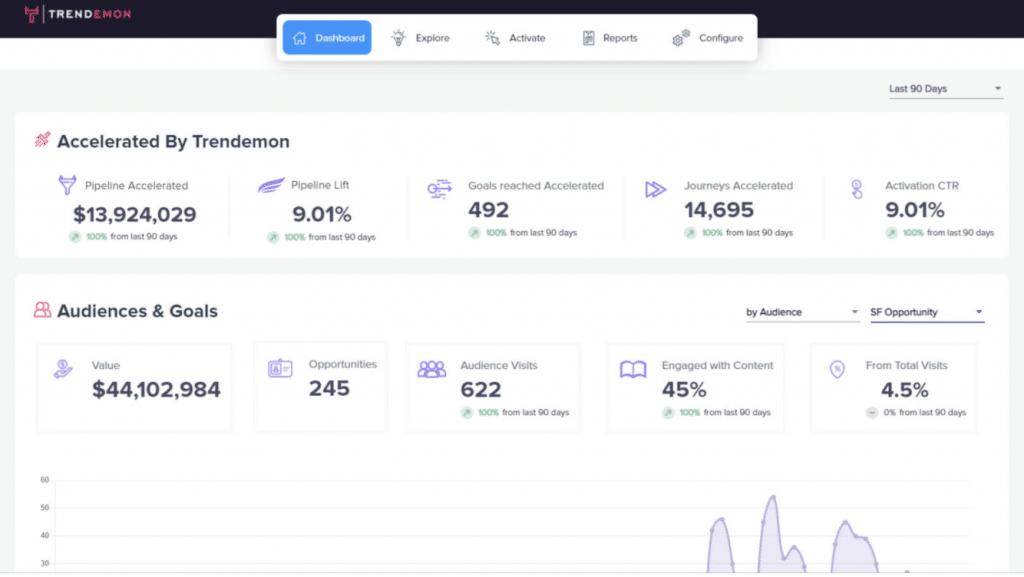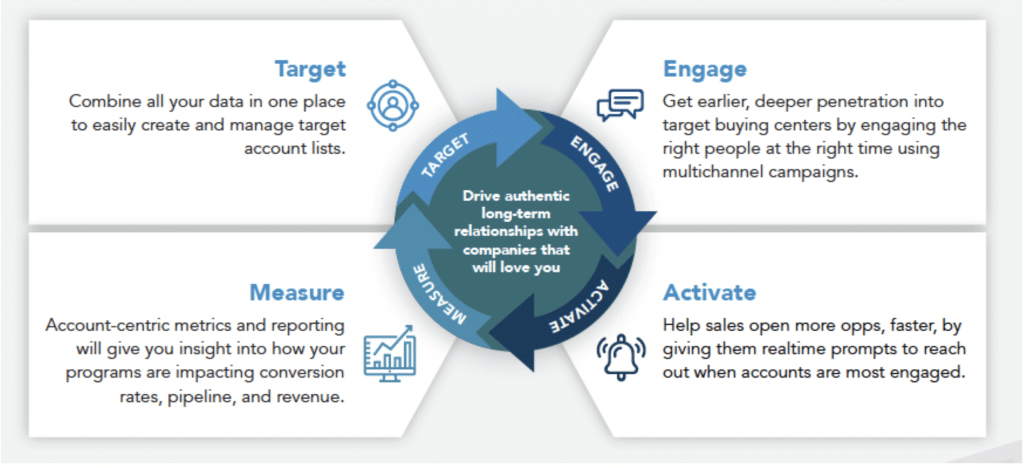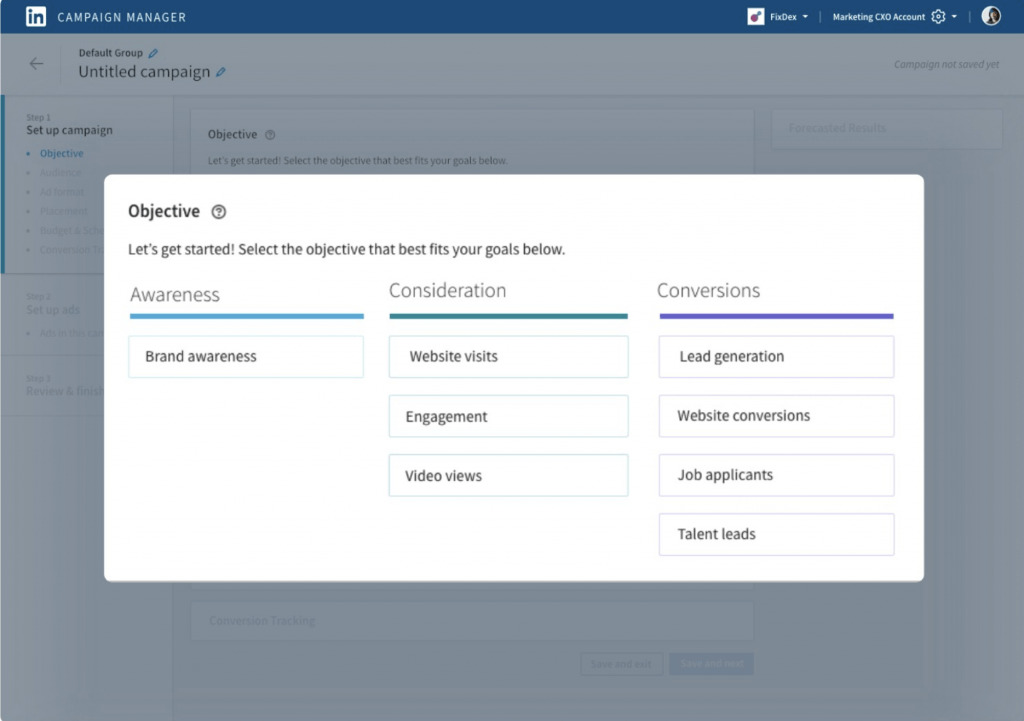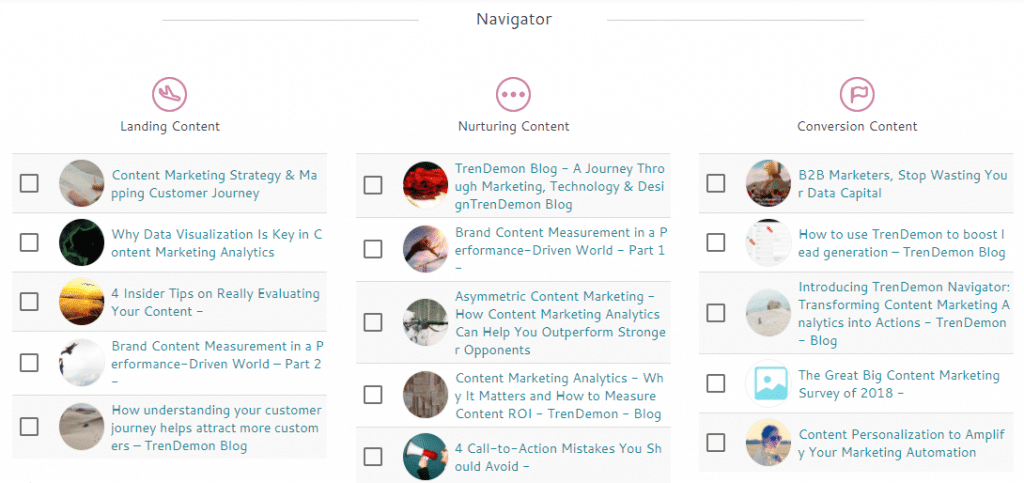Top 15 Account Based Marketing (ABM) Tactics

For most B2B companies, effectively reinventing the wheel to execute a new, more engaging marketing plan can be a real challenge. When engagement is low, it can create tension between the sales and marketing teams – and leave talented B2B marketers wondering what went wrong.
Today, 9 out of 10 B2B marketers consider ABM (Account Based Marketing) to be an effective solution to this problem. An effective ABM strategy integrates analytics and key marketing insights to help you understand where your audience is on their buyer’s journey.
The most common reason marketers turn to an ABM approach is that it’s proven to increase customer engagement and your bottom line. Nearly 85% of B2B marketers agree that an ABM strategy provides higher ROI than standard marketing strategies – so you can be assured your ABM marketing efforts will be worth it.
In this post, we’ll share with you fifteen easy-to-implement tactics that can help your ABM strategy deliver the impact you want. But first, let’s provide some background on Account Based Marketing.
What Is Account Based Marketing?
Account Based Marketing (ABM) is a focused growth strategy in which Marketing and Sales collaborate to create personalized buying experiences for a mutually identified set of high-value accounts.
In other words, it means a coordinated effort to create custom content for a specific audience that’s an ideal fit to buy your company’s product or service. ABM is an intelligent strategy to ensure that the left hand (sales) is talking to the right hand (marketing); and that the targeted prospect is presented with the most enticing content that leads them on their journey towards a purchase.
If you want to get better results for your B2B business, take advantage of the top 15 ABM tactics we’ve found to convert B2B leads into sales.
Top 15 Account Based Marketing Tactics
1. Make Sure Sales and Marketing are Aligned
When Marketing and Sales combine forces, they present a united approach to nurturing leads and fostering high conversion rates. You should prioritize consistency and a shared hyper-specific focus across multiple teams.
This tip is incredibly important for B2B companies who need to swap marketers or sales team members in and out across multiple accounts and projects. Having a consistent and agreed-upon plan keeps the project within scope, within budget, and on time. It also creates better results for the account.
2. Assemble Your Team
One thing to keep in mind as you begin pairing Sales and Marketing is to keep your teams small and agile. Smaller teams ensure that there is agreement and healthy collaboration without as many distractions. It also guards against an overwhelming amount of dissenting opinions on the direction your ABM strategy should go.
If you aren’t sure how to start putting together your ABM team, begin by letting the VP of each department hand-select good fits for each role. This strategy is most effective for small and medium-sized B2B companies.
Smaller and more agile teams benefit your company by adapting to new account demands at a moment’s notice. They can more easily continue to facilitate a responsive and proactive approach to changing client needs.
3. Personalize Your Content
When presented with personalized content, 4 out of 5 consumers are more likely to make a purchase. Aside from influencing purchasing decisions, personalized content helps your customers feel valued.
Some ways to personalize content are by adding company insights to personalize an email, or writing blog content around a common problem that affects the target account.
One very effective way to personalize your content is by implementing attribution-based personalization tactics to see how your content assets affect target accounts.
First, you track how customers engage with your content during their customer journey. This data allows you to uncover which campaigns and channels were most effective. Then, you use this information to create a personalized customer journey for your next prospect.
Based on the marketing insights you discovered, you can easily create hyper-targeted calls-to-action and other personalized content to motivate prospects to take specific actions at various points in the customer journey.
The best part is that once you start incorporating an attribution-based personalization strategy, you will have a clear snapshot of what’s working in your marketing and where your company is getting the most ROI month after month.

4. Create a Focused Target Account List
Knowing which key targets you want to go after on your Target Account List (TAL) makes it easier to plot out your ABM strategy. More specifically, you will want to target organizations as a whole, rather than internal roles.
To create a TAL that sets you up for success, prioritize the accounts that align with the solutions your company provides. It’s very important at this stage to share essential target account data across all marketing and sales teams within your company.
Next, identify your target accounts’ needs and align them with your company’s competencies. Then you can see how your target accounts match your company’s overall vision for your ideal customer profile. With this data, you can then make accurate adjustments as required to hone your TAL into a powerful ABM asset.

5. Identify your Customer Touchpoints
A customer touchpoint is the location where a customer comes into contact with your brand at any point in the sales cycle. Touchpoints can be physical, like a billboard, or virtual, like a landing page.
Identifying touchpoints is a smart marketing strategy because it helps you to tailor them to redirect clients towards taking the actions you want.
Some of these touchpoints are customer-directed actions such as finding your website, or reading your blog online.
Others are part of a comprehensive ABM cold outreach strategy. For these, you will want to strategically use personalized content via email, social media platforms, cold calls, or other touchpoints to continue the relationship and lead your customer further along the customer journey.
6. Choose Your ABM Tools
Pairing a strong ABM strategy with the right tools is a winning formula for your B2B business. Ensuring that your automation tools work well with your CRM, email marketing software, and the rest of your stack is vital for your success.
You will want to have tools that help with facets of your ABM approach, such as outreach, lead gen, and personalized marketing automation. Being well-rounded on the technology front will help create synergy with all the other ABM tactics you are incorporating.
7. Create and Execute Targeted Campaigns
Smoothly executing a well-targeted campaign requires you to select your ABM channels wisely. Finding the right platform for your intended recipient is one of the best ways to improve your odds of a successful campaign.
Your campaigns should seek to start a dialogue with your intended customer that walks them through their buying objections.
Nearly two-thirds of B2B marketers say that communication impacted their purchase decision, so it’s a good idea to dial in your message so that you can execute effectively.
Once you have a clear offer, make sure that it is going to the right customer, who is primed and ready to receive your message. Always ask yourself, “Is this content/offer going to be relevant for my target audience?”

8. Connect with Storytelling
To personalize your ABM approach, focus on telling your story and the stories of your customers. Try leveraging customer success stories in your marketing channels to help your prospects learn more about your brand and become more educated buyers.
You can do this by pairing relevant case study data with engaging insights that former customers (who closely match the profile of your target accounts) have shared about their customer experience. By pairing the story component of your business with your other ABM tactics, it seeks to solve the major problem that marketers are facing today: dwindling engagement.
Telling informative, relevant stories to your audience allows them to stay connected and plugged into your content, which spells higher conversion rates for your marketing campaigns. Just make sure you highlight stories that relate to your target account’s specific needs.
9. Send Email That’s Personalized
Personalized emails are the norm for all business communications, and this should be the case for your marketing email strategy as well. If you are targeting a C-Suite executive, make your email appeal to their needs.
Also, don’t be afraid to insert a relevant line or two about a recent accomplishment or press mention. Letting your target account know that you are familiar with their work builds trust. It can incentivize your target to follow your content and ultimately can help nurture them towards a sale.
Providing a simple narrative structure in your email targeted around a problem-solution approach will make it easy for them to instantly identify what you do and how your B2B company can help.
10. Use ABM Blogging Tactics
Blogging is the best route to reach your target accounts with the information they need to start the customer journey.
For example, you could focus on blogging about customer pain points and position your B2B company as offering the solution.
Or, you could create content that speaks to a certain account persona and address the umbrella needs of these types of accounts. No matter which tactic you choose, it is incredibly important that you take advantage of tools that help you understand how your blogging impacts your conversions.
Trendemon is an example of an ABM personalization tool that helps you accelerate the customer journey by targeting the right blog articles to your ideal client.
This powerful tool delivers highly specialized metrics such as read ratio and dwell time, leading to a better understanding of how customer actions on your blog impact buying decisions. Implementing tracking and personalized recommendations based on accurate analytics will help you make the most out of your blogging efforts.
11. Create Compelling Conversion Offers
Conversion is the goal of every sales interaction. What’s the point of writing blog content and personalizing emails if it doesn’t convert?
Conversion offers take your static content a step further by getting your prospect to take action that moves them towards a purchase. For instance, an example of a popular marketing conversion offer is to lead the prospect to download a free e-book or white paper.
For sales accounts, getting on a phone call or requesting a quote could be the next step that your B2B brand needs to convert a prospect into a sale. However, to close these accounts, the conversion offer needs to be targeted to their account type. Whether they are SQL or MQL, you’ll need to entice them with the right offer for their account type.
12. Engage on Social Media
On average, it takes interacting on six different channels before B2B customers purchase. One helpful approach is to mention target accounts on social media to prompt them to engage with your content. Another more subtle tactic is using social media to find relevant accounts and create a curated list of key contacts.
Social media can act as a helpful liaison to allow you to network with your ideal customer and establish more connections online on places like LinkedIn, Twitter, and Facebook. Remember to pair social media engagement efforts with a personalized approach to get the best results.
You can also use social media to create highly specific ads that target your ideal customer’s pain points. The feedback you will get from these campaigns is valuable insight to help you fine-tune your ABM engagement strategy.
13. Employ Paid Channel Strategies
Sometimes, it doesn’t hurt to open the checkbook and pay for increased traffic at a specific channel through display ads, social media ads, offline ads, or search engine marketing. While paid channel strategies differ between B2B brands, the premise remains consistent: maximizing your customization improves your effectiveness.
Using paid channel strategies, you can target more of the accounts you want and less of the accounts you don’t. On platforms like LinkedIn and Facebook, employing a paid strategy offers improved engagement and gives you greater access to company-specific targeting, which can be incredibly helpful.
14. Personalize Your Website
Your website communicates who your B2B brand is, but what many companies forget is that it also should make it clear who your ideal client is. Going a step further, you can personalize the user experience for how your customer interacts with your site, based on their preferences and needs. You can create customized content that only appears for select accounts.
If you want to master personalizing your website, you can also track attribution analytics. Then you can see exactly which areas of your site impact specific prospects’ buying journeys – and optimize accordingly.

15. Measure Your Progress and Adjust
Measuring your progress is crucial to making the necessary adjustments to create marketing success. Determining which KPIs you want to measure is where this becomes specialized for your business.
For instance, you may wish to measure your key relationships for accounts, or you may choose to focus more on social media engagement. Ultimately, your ABM strategy should help you to sell. That’s why measuring your ROI against costs such as paid channel ad spend is vital to your B2B business growth.
ABM Provides Key Advantages
ABM offers significant advantages over other marketing approaches that help you to have a more streamlined, easy-to-measure pathway to success. Moving the needle in the B2B world requires careful strategy and nuanced tactics to convert prospects into sales.
The buyer’s journey can be a winding road, which is why having your marketing and sales teams in sync is one of the most significant advantages of adopting an ABM approach. Employing these fifteen tactics will help ensure greater ROI in your marketing efforts – and most importantly, engaged customers.